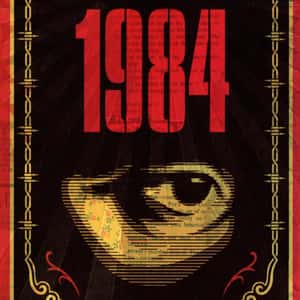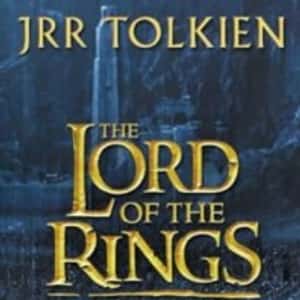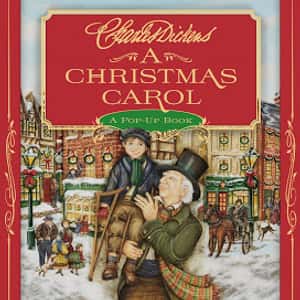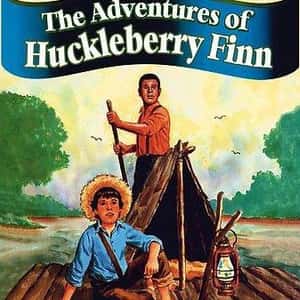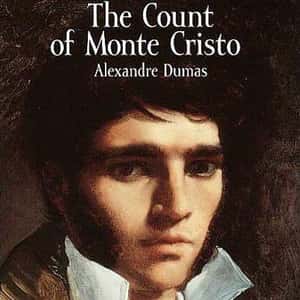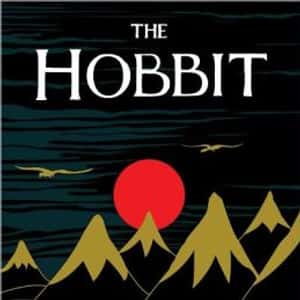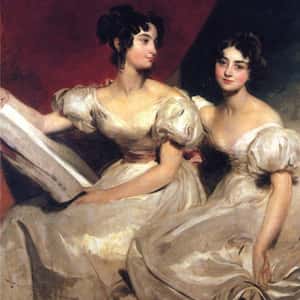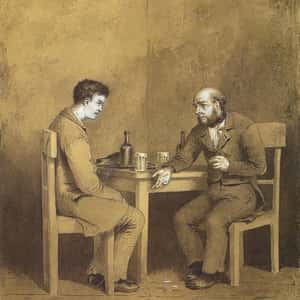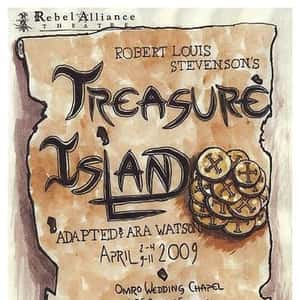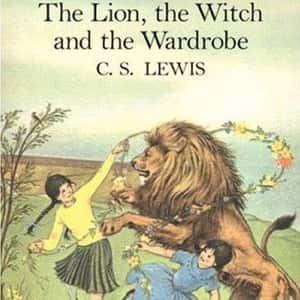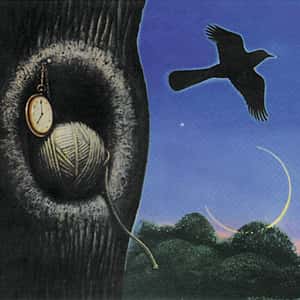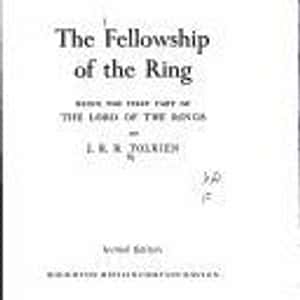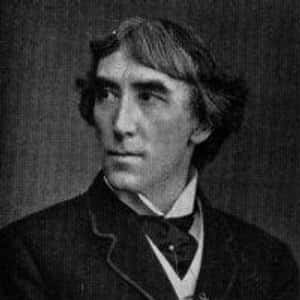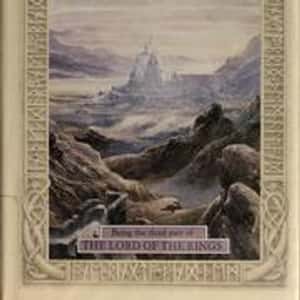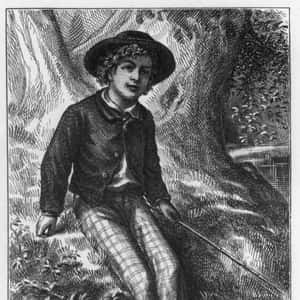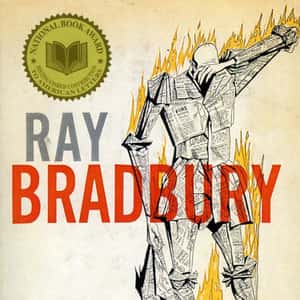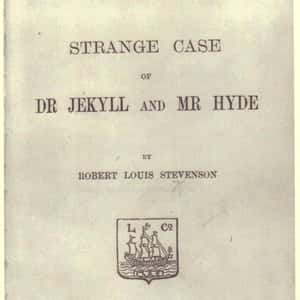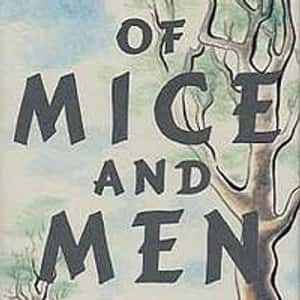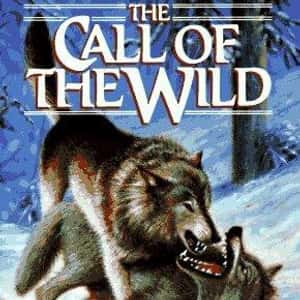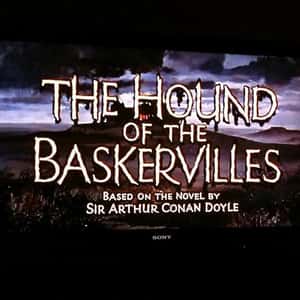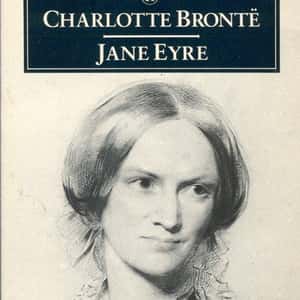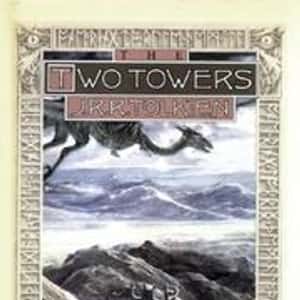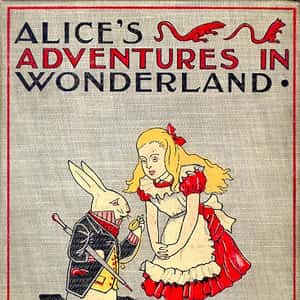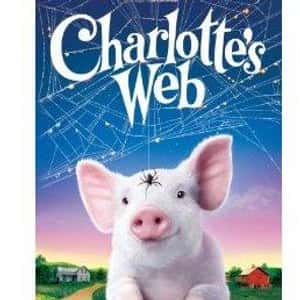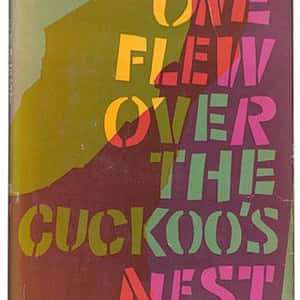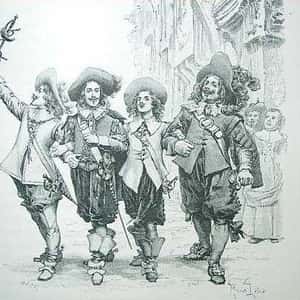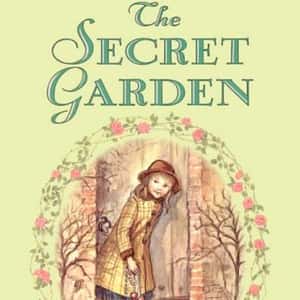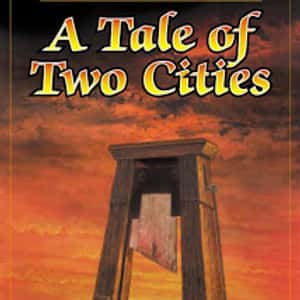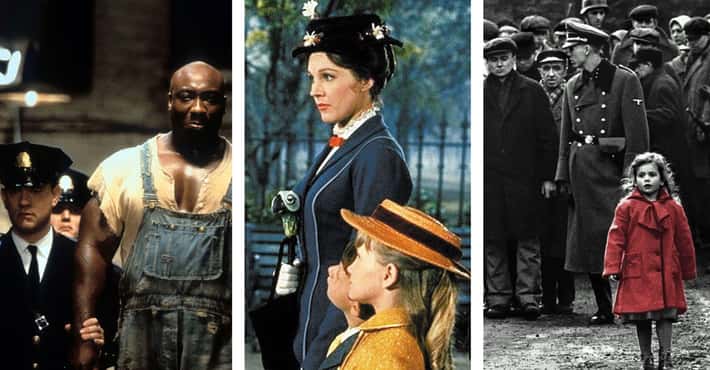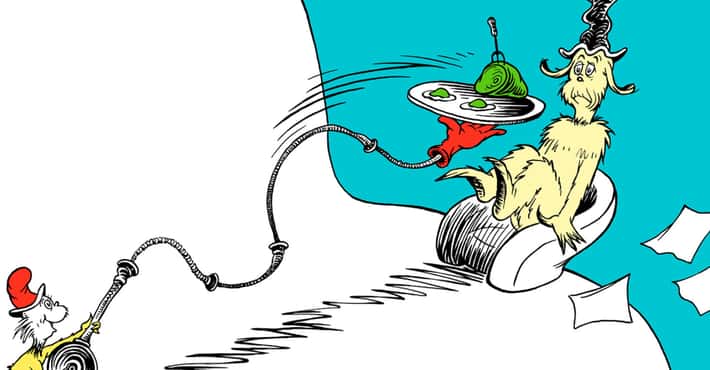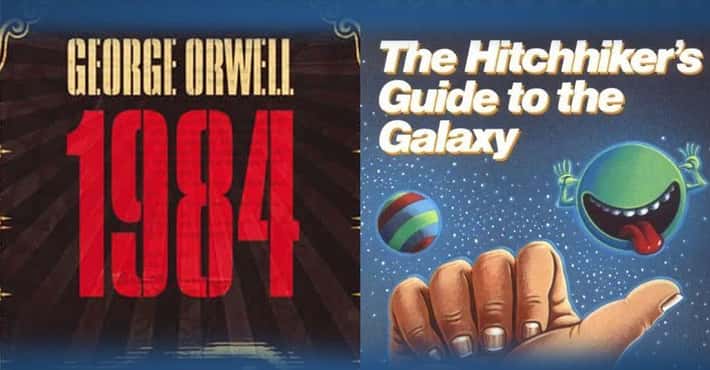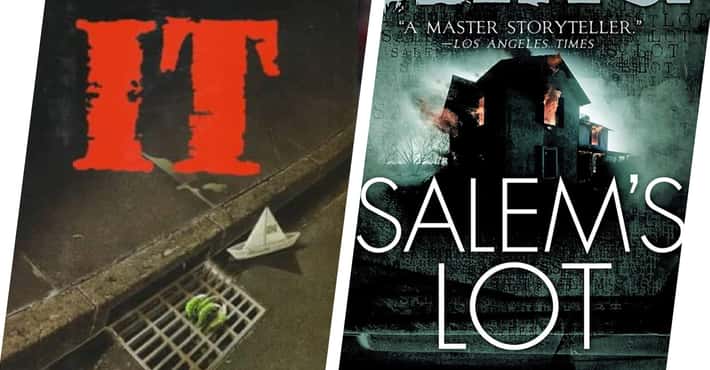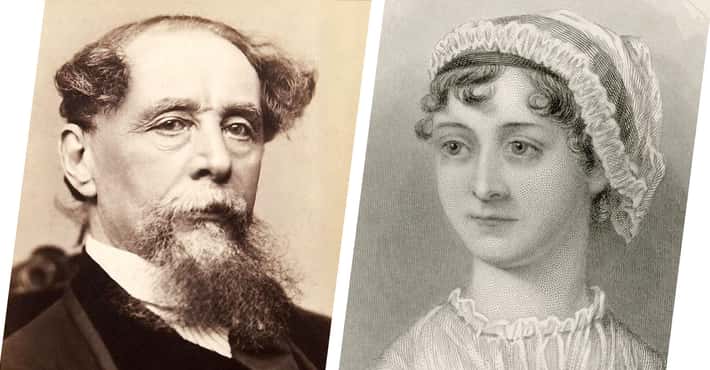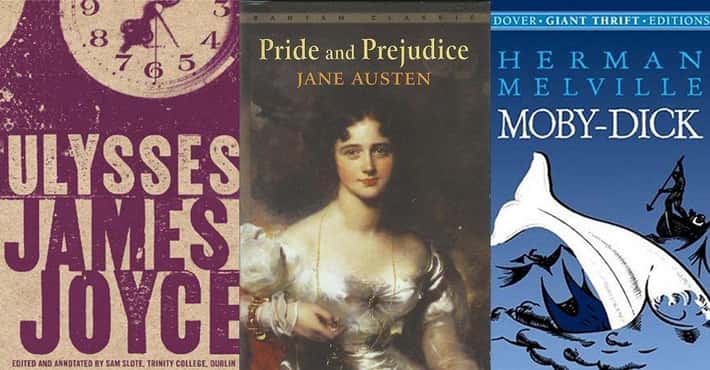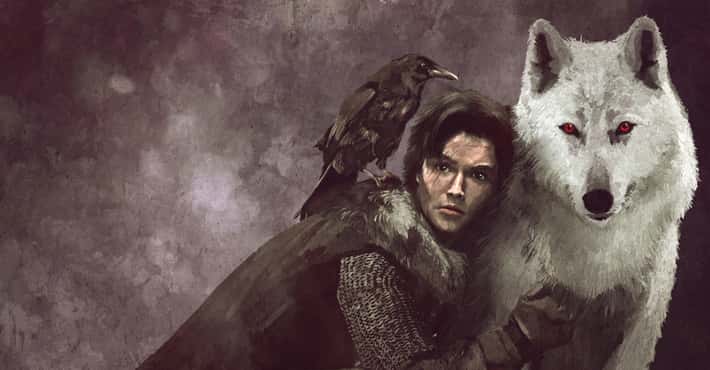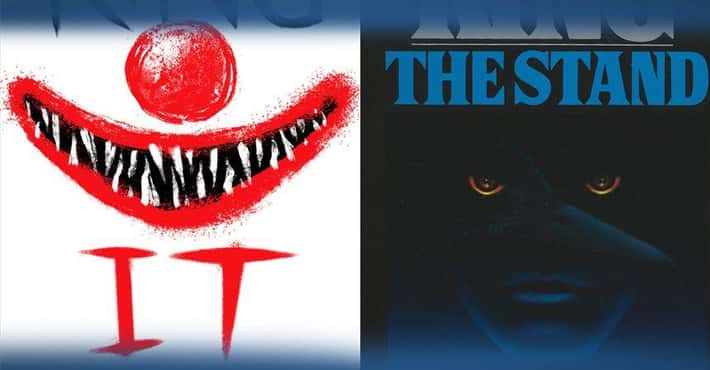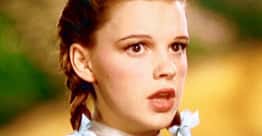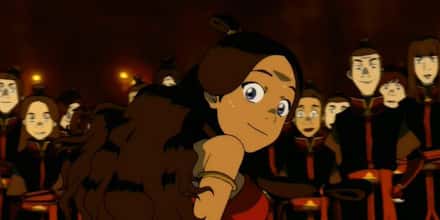
The Best Novels Ever Written
As you embark on a quest to uncover the best novels of all time, you will find a treasure trove of literary masterpieces that have left indelible marks on the hearts of readers. Delving into the pages of these renowned works offers an unparalleled opportunity to explore the depths of artistic expression and creativity that have shaped the world of fiction.
The realm of the best novels of all time is populated by immensely powerful works of fiction, capturing hearts and minds alike with their unparalleled storytelling and captivating themes. Their gripping narratives, unforgettable characters, and profound themes captivate audiences, transporting them to realms of imagination and insight. From epic sagas to thought-provoking dystopias, these books represent the pinnacle of literary brilliance, captivating the hearts and minds of generations with their rich, immersive stories.
The best books of all time include masterpieces like Nineteen Eighty-Four, The Lord of the Rings, and Frankenstein. Nineteen Eighty-Four's harrowing portrayal of totalitarianism has proven hauntingly relevant, while The Lord of the Rings remains an enduring testament to the power of friendship and courage amid an epic battle between good and evil. Frankenstein, meanwhile, birthed the modern science fiction genre with its riveting tale of ambition, morality, and the consequences of playing God. The enduring appeal of these best novels is further evidenced by the numerous successful movie adaptations that cement their status in popular culture.
Shining like beacons in the literary landscape, the best novels of all time illuminate the path towards understanding the complexity and beauty of human existence in all its forms. As they lure readers into their worlds, they offer vital insights into humanity's triumphs and struggles, enriching lives with their wisdom and beauty. While countless novels have graced the shelves of libraries and bookstores, these best books of all time remain unrivaled, continuing to inspire and enthrall generations of readers with their timeless allure.
- George OrwellNineteen Eighty-Four, sometimes published as 1984, is a dystopian novel by English author George Orwell published in 1949. The novel is set in Airstrip One, a province of the superstate Oceania in a world of perpetual war, omnipresent government surveillance and public manipulation, dictated by a political system euphemistically named English Socialism under the control of a privileged Inner Party elite, that persecutes individualism and independent thinking as "thoughtcrimes". The tyranny is epitomised by Big Brother, the quasi-divine Party leader who enjoys an intense cult of personality but who may not even exist. The Party "seeks power entirely for its own sake. We are not interested in the good of others; we are interested solely in power." The protagonist of the novel, Winston Smith, is a member of the Outer Party, who works for the Ministry of Truth, which is responsible for propaganda and historical revisionism. His job is to rewrite past newspaper articles, so that the historical record always supports the party line. Smith is a diligent and skillful worker but he secretly hates the Party and dreams of rebellion against Big Brother.More Nineteen Eighty-Four
- Dig Deeper...The Best Selling Books of All Time
- #9 of 82 on35+ Books Everybody Lies About Having Read
- #9 of 271 onThe Top Must-Read Books of All Time
- J. R. R. TolkienThe Lord of the Rings is an epic high-fantasy novel written by English author J. R. R. Tolkien. The story began as a sequel to Tolkien's 1937 fantasy novel The Hobbit, but eventually developed into a much larger work. Written in stages between 1937 and 1949, much of it during World War II, The Lord of the Rings is one of the best-selling novels ever written, with over 150 million copies sold. The title of the novel refers to the story's main antagonist, the Dark Lord Sauron, who had in an earlier age created the One Ring to rule the other Rings of Power as the ultimate weapon in his campaign to conquer and rule all of Middle-earth.
- Dig Deeper...The Best Selling Books of All Time
- #1 of 92 onThe 90+ Best High Fantasy Books You Should Read
- #10 of 82 on35+ Books Everybody Lies About Having Read
- Mary ShelleyFrankenstein; or, The Modern Prometheus, is a novel written by English author Mary Shelley about the young student of science Victor Frankenstein, who creates a grotesque but sentient creature in an unorthodox scientific experiment. Shelley started writing the story when she was eighteen, and the novel was published when she was twenty. The first edition was published anonymously in London in 1818. Shelley's name appears on the second edition, published in France in 1823. Shelley had travelled through Europe in 1814, journeying along the river Rhine in Germany with a stop in Gernsheim which is just 17 km away from Frankenstein Castle, where two centuries before an alchemist was engaged in experiments. Later, she travelled in the region of Geneva —where much of the story takes place—and the topics of galvanism and other similar occult ideas were themes of conversation among her companions, particularly her lover and future husband, Percy Shelley. Mary, Percy, Lord Byron, and John Polidori decided to have a competition to see who could write the best horror story.More Frankenstein
- #16 of 134 onThe 130+ Best Gothic Fiction Books You Should Read
- #47 of 47 onThe 45+ Best Epistolary Books
- #38 of 271 onThe Top Must-Read Books of All Time
- Charles DickensA Christmas Carol is a novella by Charles Dickens, first published in London by Chapman & Hall on 19 December 1843. The novella met with instant success and critical acclaim. Carol tells the story of a bitter old miser named Ebenezer Scrooge and his transformation into a gentler, kindlier man after visitations by the ghost of his former business partner Jacob Marley and the Ghosts of Christmases Past, Present and Yet to Come. The book was written at a time when the British were examining and exploring Christmas traditions from the past as well as new customs such as Christmas cards and Christmas trees. Carol singing took a new lease on life during this time. Dickens' sources for the tale appear to be many and varied, but are, principally, the humiliating experiences of his childhood, his sympathy for the poor, and various Christmas stories and fairy tales. Dickens' Carol was one of the greatest influences in rejuvenating the old Christmas traditions of England, but, while it brings to the reader images of light, joy, warmth and life, it also brings strong and unforgettable images of darkness, despair, coldness, sadness, and death.More A Christmas Carol
- #3 of 72 onThe 70+ Best Fairy Tale Books To Read
- #3 of 192 onThe 190+ Best Novellas To Read
- #33 of 271 onThe Top Must-Read Books of All Time
- Mark TwainAdventures of Huckleberry Finn is a novel by Mark Twain, first published in the United Kingdom in December 1884 and in the United States in February 1885. Commonly named among the Great American Novels, the work is among the first in major American literature to be written throughout in vernacular English, characterized by local color regionalism. It is told in the first person by Huckleberry "Huck" Finn, a friend of Tom Sawyer and narrator of two other Twain novels. It is a direct sequel to The Adventures of Tom Sawyer. The book is noted for its colorful description of people and places along the Mississippi River. Set in a Southern antebellum society that had ceased to exist about twenty years before the work was published, Adventures of Huckleberry Finn is an often scathing satire on entrenched attitudes, particularly racism. Perennially popular with readers, Adventures of Huckleberry Finn has also been the continued object of study by literary critics since its publication.
- #1 of 154 onThe Greatest American Novels
- #11 of 271 onThe Top Must-Read Books of All Time
- #11 of 66 onThe Best Satirical Novels
- Alexandre Dumas, Auguste MaquetThe Count of Monte Cristo is an adventure novel by French author Alexandre Dumas completed in 1844. It is one of the author's most popular works, along with The Three Musketeers. Like many of his novels, it is expanded from plot outlines suggested by his collaborating ghostwriter Auguste Maquet. The story takes place in France, Italy, and islands in the Mediterranean during the historical events of 1815–1839: the era of the Bourbon Restoration through the reign of Louis-Philippe of France. It begins just before the Hundred Days period. The historical setting is a fundamental element of the book, an adventure story primarily concerned with themes of hope, justice, vengeance, mercy, and forgiveness. It focuses on a man who is wrongfully imprisoned, escapes from jail, acquires a fortune, and sets about getting revenge on those responsible for his imprisonment. However, his plans have devastating consequences for the innocent as well as the guilty. In addition, it is a story that involves romance, loyalty, betrayal, and selfishness, shown throughout the story as characters slowly reveal their true inner nature.
- #34 of 82 on35+ Books Everybody Lies About Having Read
- #73 of 271 onThe Top Must-Read Books of All Time
- #66 of 329 onBooks That Changed Your Life
- J. R. R. TolkienThe Hobbit, or There and Back Again is a fantasy novel and children's book by English author J. R. R. Tolkien. It was published on 21 September 1937 to wide critical acclaim, being nominated for the Carnegie Medal and awarded a prize from the New York Herald Tribune for best juvenile fiction. The book remains popular and is recognized as a classic in children's literature. Set in a time "Between the Dawn of Færie and the Dominion of Men", The Hobbit follows the quest of home-loving hobbit Bilbo Baggins to win a share of the treasure guarded by the dragon, Smaug. Bilbo's journey takes him from light-hearted, rural surroundings into more sinister territory. The story is told in the form of an episodic quest, and most chapters introduce a specific creature, or type of creature, of Tolkien's Wilderland. By accepting the disreputable, romantic, fey and adventurous sides of his nature and applying his wits and common sense, Bilbo gains a new level of maturity, competence and wisdom. The story reaches its climax in the Battle of the Five Armies, where many of the characters and creatures from earlier chapters re-emerge to engage in conflict.More The Hobbit
- Dig Deeper...The Best Selling Books of All Time
- #26 of 271 onThe Top Must-Read Books of All Time
- #40 of 111 onThe Best Overall Books for Kids
- Jane AustenPride and Prejudice is a novel of manners by Jane Austen, first published in 1813. The story follows the main character, Elizabeth Bennet, as she deals with issues of manners, upbringing, morality, education, and marriage in the society of the landed gentry of the British Regency. Elizabeth is the second of five daughters of a country gentleman living near the fictional town of Meryton in Hertfordshire, near London. Set in England in the early 19th century, Pride and Prejudice tells the story of Mr and Mrs Bennet's five unmarried daughters after the rich and eligible Mr Bingley and his status-conscious friend, Mr Darcy, have moved into their neighbourhood. While Bingley takes an immediate liking to the eldest Bennet daughter, Jane, Darcy has difficulty adapting to local society and repeatedly clashes with the second-eldest Bennet daughter, Elizabeth. Though Austen set the story at the turn of the 19th century, it retains a fascination for modern readers, continuing near the top of lists of "most loved books." It has become one of the most popular novels in English literature, selling over 20 million copies, and receives considerable attention from literary scholars.More Pride and Prejudice
- #3 of 187 onThe 185+ Best Satire Books Everyone Must Read
- #16 of 82 on35+ Books Everybody Lies About Having Read
- #47 of 271 onThe Top Must-Read Books of All Time
- Fyodor DostoyevskyCrime and Punishment is a novel by the Russian author Fyodor Dostoyevsky. It was first published in the literary journal The Russian Messenger in twelve monthly installments during 1866. It was later published in a single volume. It is the second of Dostoyevsky's full-length novels following his return from ten years of exile in Siberia. Crime and Punishment is considered the first great novel of his "mature" period of writing. Crime and Punishment focuses on the mental anguish and moral dilemmas of Rodion Raskolnikov, an impoverished ex-student in St. Petersburg who formulates and executes a plan to kill an unscrupulous pawnbroker for her cash. Raskolnikov argues that with the pawnbroker's money he can perform good deeds to counterbalance the crime, while ridding the world of a worthless vermin. He also commits this murder to test his own hypothesis that some people are naturally capable of such things, and even have the right to do them. Several times throughout the novel, Raskolnikov justifies his actions by comparing himself with Napoleon Bonaparte, believing that murder is permissible in pursuit of a higher purpose.More Crime and Punishment
- #69 of 82 on35+ Books Everybody Lies About Having Read
- #123 of 271 onThe Top Must-Read Books of All Time
- #1 of 41 onThe Best Russian Novels
- Robert Louis StevensonTreasure Island is an adventure novel by Scottish author Robert Louis Stevenson, narrating a tale of "buccaneers and buried gold". First published as a book on 14 November 1883 by Cassell & Co., it was originally serialized in the children's magazine Young Folks between 1881 and 1882 under the title Treasure Island or, the mutiny of the Hispaniola with Stevenson adopting the pseudonym Captain George North. Traditionally considered a coming-of-age story, Treasure Island is a tale noted for its atmosphere, characters and action, and also as a wry commentary on the ambiguity of morality – as seen in Long John Silver – unusual for children's literature. It is one of the most frequently dramatized of all novels. The influence of Treasure Island on popular perceptions of pirates is enormous, including such elements as treasure maps marked with an "X", schooners, the Black Spot, tropical islands, and one-legged seamen bearing parrots on their shoulders.More Treasure Island
- #56 of 590 onThe 590 Best Business Books To Read
- #21 of 82 on35+ Books Everybody Lies About Having Read
- #42 of 271 onThe Top Must-Read Books of All Time
- C. S. LewisThe Lion, the Witch and the Wardrobe is a high fantasy novel for children by C. S. Lewis, published by Geoffrey Bles in 1950. It was the first published of seven novels in The Chronicles of Narnia and the best known; among all the author's books it is the most widely held in libraries. Although it was written as well as published first in the series, it is volume two in recent editions, which are sequenced according to Narnia history. Like the others, it was illustrated by Pauline Baynes, and her work has been retained in many later editions. Most of the novel is set in Narnia, a land of talking animals and mythical creatures that the White Witch has ruled for 100 years of deep winter. In the frame story, four English children live in a big, old country house during their World War II evacuation from London. The youngest visits Narnia three times via the wardrobe in a spare room. All four children are together on her third visit, which validates her stories and comprises the last 12 of 17 chapters except a brief conclusion. In Narnia the siblings seem to fulfill an old prophecy, so they are soon adventuring both to save Narnia and their lives.
- Harper LeeTo Kill a Mockingbird is a novel by Harper Lee published in 1960. It was immediately successful, winning the Pulitzer Prize, and has become a classic of modern American literature. The plot and characters are loosely based on the author's observations of her family and neighbors, as well as on an event that occurred near her hometown in 1936, when she was 10 years old. The novel is renowned for its warmth and humor, despite dealing with the serious issues of rape and racial inequality. The narrator's father, Atticus Finch, has served as a moral hero for many readers and as a model of integrity for lawyers. One critic explains the novel's impact by writing, "In the twentieth century, To Kill a Mockingbird is probably the most widely read book dealing with race in America, and its protagonist, Atticus Finch, the most enduring fictional image of racial heroism." As a Southern Gothic novel and a Bildungsroman, the primary themes of To Kill a Mockingbird involve racial injustice and the destruction of innocence. Scholars have noted that Lee also addresses issues of class, courage, compassion, and gender roles in the American Deep South.
- Dig Deeper...The Best Selling Books of All Time
- #1 of 82 on35+ Books Everybody Lies About Having Read
- #2 of 154 onThe Greatest American Novels
- J. R. R. TolkienThe Fellowship of the Ring is the first of three volumes of the epic novel The Lord of the Rings by the English author J. R. R. Tolkien. It takes place in the fictional universe of Middle-earth. It was originally published on July 29, 1954 in the United Kingdom. The volume consists of a prologue titled "Concerning Hobbits, and other matters" followed by Book I and Book II.
- Bram StokerDracula is an 1897 Gothic horror novel by Irish author Bram Stoker. Famous for introducing the character of the vampire Count Dracula, the novel tells the story of Dracula's attempt to move from Transylvania to England so he may find new blood and spread the undead curse, and the battle between Dracula and a small group of men and women led by Professor Abraham Van Helsing. Dracula has been assigned to many literary genres including vampire literature, horror fiction, the gothic novel and invasion literature. The novel touches on themes such as the role of women in Victorian culture, sexual conventions, immigration, colonialism, and post-colonialism. Although Stoker did not invent the vampire, he defined its modern form, and the novel has spawned numerous theatrical, film and television interpretations.More Dracula
- #1 of 134 onThe 130+ Best Gothic Fiction Books You Should Read
- #2 of 47 onThe 45+ Best Epistolary Books
- #49 of 271 onThe Top Must-Read Books of All Time
- J. R. R. TolkienThe Return of the King is the third and final volume of J. R. R. Tolkien's The Lord of the Rings, following The Fellowship of the Ring and The Two Towers. The story begins in the kingdom of Gondor, which is soon to be attacked by the Dark Lord Sauron.
- Mark TwainThe Adventures of Tom Sawyer by Mark Twain is an 1876 novel about a young boy growing up along the Mississippi River. The story is set in the fictional town of St. Petersburg, inspired by Hannibal, Missouri, where Twain lived.
- #3 of 63 onThe 60+ Best Bildungsroman Books Everyone Should Read
- #3 of 82 on35+ Books Everybody Lies About Having Read
- #7 of 154 onThe Greatest American Novels
- Ray BradburyFahrenheit 451 is a dystopian novel by Ray Bradbury published in 1953. It is regarded as one of his best works. The novel presents a future American society where books are outlawed and "firemen" burn any that are found. The title refers to the temperature that Bradbury understood to be the autoignition point of paper. The novel has been the subject of interpretations primarily focusing on the historical role of book burning in suppressing dissenting ideas. In a 1956 radio interview, Bradbury stated that he wrote Fahrenheit 451 because of his concerns at the time about the threat of book burning in the United States. In later years, he stated his motivation for writing the book in more general terms. The novel has won multiple awards. In 1954, it won the American Academy of Arts and Letters Award in Literature and the Commonwealth Club of California Gold Medal. It has since won the Prometheus "Hall of Fame" Award in 1984 and a 1954 "Retro" Hugo Award, one of only four Best Novel Retro Hugos ever given, in 2004. Bradbury was honored with a Spoken Word Grammy nomination for his 1976 audiobook version. The novel has been adapted several times.More Fahrenheit 451
- #1 of 162 onThe 160+ Best Dystopian Novels To Prep For The End Of The World
- #17 of 82 on35+ Books Everybody Lies About Having Read
- #11 of 154 onThe Greatest American Novels
- Robert Louis StevensonStrange Case of Dr. Jekyll and Mr. Hyde is the original title of a novella written by the Scottish author Robert Louis Stevenson that was first published in 1886. The work is commonly known today as The Strange Case of Dr. Jekyll and Mr. Hyde, Dr. Jekyll and Mr. Hyde, or simply Jekyll & Hyde. It is about a London lawyer named Gabriel John Utterson who investigates strange occurrences between his old friend, Dr. Henry Jekyll, and the evil Edward Hyde. The work is commonly associated with the rare mental condition often called "split personality", referred to in psychiatry as dissociative identity disorder, where within the same body there exists more than one distinct personality. In this case, there are two personalities within Dr. Jekyll, one apparently good and the other evil. The novella's impact is such that it has become a part of the language, with the very phrase "Jekyll and Hyde" coming to mean a person who is vastly different in moral character from one situation to the next.
- #13 of 91 onThe 90+ Best The Best Drama Books Everyone Should Read
- #58 of 271 onThe Top Must-Read Books of All Time
- #41 of 124 onThe Scariest Horror Books of All Time
- John SteinbeckOf Mice and Men is a novella written by Nobel Prize–winning author John Steinbeck. Published in 1937, it tells the story of George Milton and Lennie Small, two displaced migrant ranch workers, who move from place to place in search of new job opportunities during the Great Depression in California, United States. Based on Steinbeck's own experiences as a bindlestiff in the 1920s, the title is taken from Robert Burns' poem "To a Mouse", which read: "The best laid schemes o' mice an' men / Gang aft agley". Required reading in many schools, Of Mice and Men has been a frequent target of censors for vulgarity and what some consider offensive and racist language; consequently, it appears on the American Library Association's list of the Most Challenged Books of 21st Century.More Of Mice and Men
- #4 of 192 onThe 190+ Best Novellas To Read
- #7 of 82 on35+ Books Everybody Lies About Having Read
- #3 of 154 onThe Greatest American Novels
- Jack LondonThe Call of the Wild is a novel by Jack London published in 1903. The story is set in the Yukon during the 1890s Klondike Gold Rush—a period in which strong sled dogs were in high demand. The novel's central character is a dog named Buck, a domesticated dog living at a ranch in the Santa Clara Valley of California as the story opens. Stolen from his home and sold into service as sled dog in Alaska, he reverts to a wild state. Buck is forced to fight in order to dominate other dogs in a harsh climate. Eventually he sheds the veneer of civilization, relying on primordial instincts and learned experience to emerge as a leader in the wild. London lived for most of a year in the Yukon collecting material for the book. The story was serialized in the Saturday Evening Post in the summer of 1903; a month later it was released in book form. The novel’s great popularity and success made a reputation for London. Much of its appeal derives from the simplicity of this tale of survival. As early as 1908 the story was adapted to film and it has since seen several more cinematic adaptations.More The Call of the Wild
- #9 of 154 onThe Greatest American Novels
- #36 of 271 onThe Top Must-Read Books of All Time
- #61 of 115 onThe Greatest Children's Books That Were Made Into Movies
- Arthur Conan DoyleThe Hound of the Baskervilles is the third of the crime novels written by Sir Arthur Conan Doyle featuring the detective Sherlock Holmes. Originally serialised in The Strand Magazine from August 1901 to April 1902, it is set largely on Dartmoor in Devon in England's West Country and tells the story of an attempted murder inspired by the legend of a fearsome, diabolical hound of supernatural origin. Sherlock Holmes and his companion Dr. Watson investigate the case. This was the first appearance of Holmes since his intended death in "The Final Problem", and the success of The Hound of the Baskervilles led to the character's eventual revival. In 2003, the book was listed as number 128 of 200 on the BBC's The Big Read poll of the UK's "best-loved novel." In 1999, it was listed as the top Holmes novel, with a perfect rating from Sherlockian scholars of 100.
- #62 of 271 onThe Top Must-Read Books of All Time
- #74 of 329 onBooks That Changed Your Life
- #2 of 60 onThe Best Suspense Novels
- Charlotte BrontëJane Eyre is a novel by English writer Charlotte Brontë. It was published on 16 October 1847 by Smith, Elder & Co. of London, England, under the pen name "Currer Bell." The first American edition was published the following year by Harper & Brothers of New York. Primarily of the bildungsroman genre, Jane Eyre follows the emotions and experiences of its title character, including her growth to adulthood, and her love for Mr. Rochester, the byronic master of fictitious Thornfield Hall. In its internalisation of the action—the focus is on the gradual unfolding of Jane's moral and spiritual sensibility, and all the events are coloured by a heightened intensity that was previously the domain of poetry—Jane Eyre revolutionised the art of fiction. Charlotte Brontë has been called the 'first historian of the private consciousness' and the literary ancestor of writers like Joyce and Proust. The novel contains elements of social criticism, with a strong sense of morality at its core, but is nonetheless a novel many consider ahead of its time given the individualistic character of Jane and the novel's exploration of classism, sexuality, religion, and proto-feminism.More Jane Eyre
- J. R. R. TolkienThe Two Towers is the second volume of J. R. R. Tolkien's high fantasy novel The Lord of the Rings. It is preceded by The Fellowship of the Ring and followed by The Return of the King.
- Lewis Carroll, William GlennonAlice's Adventures in Wonderland (commonly shortened to Alice in Wonderland) is an 1865 novel written by English author Charles Lutwidge Dodgson under the pseudonym Lewis Carroll. It tells of a girl named Alice falling through a rabbit hole into a fantasy world populated by peculiar, anthropomorphic creatures. The tale plays with logic, giving the story lasting popularity with adults as well as with children. It is considered to be one of the best examples of the literary nonsense genre. Its narrative course, structure, characters, and imagery have been enormously influential in both popular culture and literature, especially in the fantasy genre.More Alice in Wonderland
- Dig Deeper...The Best Selling Books of All Time
- #14 of 82 on35+ Books Everybody Lies About Having Read
- #28 of 271 onThe Top Must-Read Books of All Time
- E. B. WhiteCharlotte's Web is a children's novel by American author E. B. White and illustrated by Garth Williams; it was published on October 15, 1952, by Harper & Brothers. The novel tells the story of a livestock pig named Wilbur and his friendship with a barn spider named Charlotte. When Wilbur is in danger of being slaughtered by the farmer, Charlotte writes messages praising Wilbur (such as "Some Pig") in her web in order to persuade the farmer to let him live. Written in White's dry, low-key manner, Charlotte's Web is considered a classic of children's literature, enjoyable to adults as well as children. The description of the experience of swinging on a rope swing at the farm is an often cited example of rhythm in writing, as the pace of the sentences reflects the motion of the swing. In 2000, Publishers Weekly listed the book as the best-selling children's paperback of all time.Charlotte's Web was adapted into an animated feature by Hanna-Barbera Productions and Sagittarius Productions in 1973. Paramount released a direct-to-video sequel, Charlotte's Web 2: Wilbur's Great Adventure, in the U.S. in 2003 (Universal released the film internationally). A live-action film version of E. B. White's original story was released in 2006. A video game based on this adaptation was also released in 2006.More Charlotte's Web
- Dig Deeper...The Best Selling Books of All Time
- #1 of 271 onThe Top Must-Read Books of All Time
- #8 of 111 onThe Best Overall Books for Kids
- Ken KeseyOne Flew Over the Cuckoo's Nest is a novel written by Ken Kesey. Set in an Oregon psychiatric hospital, the narrative serves as a study of the institutional processes and the human mind as well as a critique of behaviorism and a celebration of humanistic principles. Published in 1962, the novel was adapted into a Broadway play by Dale Wasserman in 1963. Bo Goldman adapted the novel for the 1975 film directed by Miloš Forman, which won five Academy Awards. Time Magazine included the novel in its "100 Best English-language Novels from 1923 to 2005" list.
- #1 of 91 onThe 90+ Best The Best Drama Books Everyone Should Read
- #2 of 20 onKen Kesey Books List
- #13 of 154 onThe Greatest American Novels
- Alexandre DumasThe Three Musketeers is a novel by Alexandre Dumas. Set in the 17th century, it recounts the adventures of a young man named d'Artagnan after he leaves home to travel to Paris, to join the Musketeers of the Guard. D'Artagnan is not one of the musketeers of the title; those being his friends Athos, Porthos and Aramis, inseparable friends who live by the motto "all for one, one for all", a motto which is first put forth by d'Artagnan. In genre, The Three Musketeers is primarily an historical novel and adventure. However Dumas also frequently works into the plot various injustices, abuses and absurdities of the old regime, giving the novel an additional political aspect at a time when the debate in France between republicans and monarchists was still fierce. The story was first serialized from March to July 1844, during the July monarchy, four years before the French Revolution of 1848 violently established the second Republic. The author's father, Thomas-Alexandre Dumas had been a well-known General in France's Republican army during the French revolutionary wars.
- Frances Hodgson BurnettThe Secret Garden is a novel by Frances Hodgson Burnett. It was initially published in serial format starting in the autumn of 1910, and was first published in its entirety in 1911. It is now one of Burnett's most popular novels, and is considered to be a classic of English children's literature. Several stage and film adaptations have been produced.More The Secret Garden
- #26 of 329 onBooks That Changed Your Life
- #39 of 115 onThe Greatest Children's Books That Were Made Into Movies
- #3 of 28 onThe Best Inspirational Books for Young Adults
- Charles DickensA Tale of Two Cities is a novel by Charles Dickens, set in London and Paris before and during the French Revolution. The novel depicts the plight of the French peasantry demoralised by the French aristocracy in the years leading up to the revolution, the corresponding brutality demonstrated by the revolutionaries toward the former aristocrats in the early years of the revolution, and many unflattering social parallels with life in London during the same period. It follows the lives of several characters through these events. A Tale of Two Cities was published in weekly installments from April 1859 to November 1859 in Dickens's new literary periodical titled All the Year Round. All but three of Dickens's previous novels had appeared only as monthly installments.More A Tale of Two Cities
- Dig Deeper...The Best Selling Books of All Time
- #22 of 82 on35+ Books Everybody Lies About Having Read
- #56 of 271 onThe Top Must-Read Books of All Time
- Charles DickensOliver Twist, or The Parish Boy's Progress, is the second novel by Charles Dickens, and was first published as a serial 1837–9. The story is of the orphan Oliver Twist, who starts his life in a workhouse and is then apprenticed with an undertaker. He escapes from there and travels to London where he meets the Artful Dodger, a member of a gang of juvenile pickpockets, who leads to the lair of the elderly criminal Fagin. Oliver Twist is notable for Dickens's unromantic portrayal of criminals and their sordid lives, as well as exposing the cruel treatment of the many orphans in London in the mid–nineteenth century. The alternate title, The Parish Boy's Progress, alludes to Bunyan's The Pilgrim's Progress, as well as the 18th-century caricature series by William Hogarth, A Rake's Progress and A Harlot's Progress. An early example of the social novel, Dickens satirizes the hypocrisies of his time, including child labour, the recruitment of children as criminals, and the presence of street children. The novel may have been inspired by the story of Robert Blincoe, an orphan whose account of working as a child labourer in a cotton mill was widely read in the 1830s.More Oliver Twist
- #30 of 82 on35+ Books Everybody Lies About Having Read
- #61 of 271 onThe Top Must-Read Books of All Time
- #73 of 115 onThe Greatest Children's Books That Were Made Into Movies


